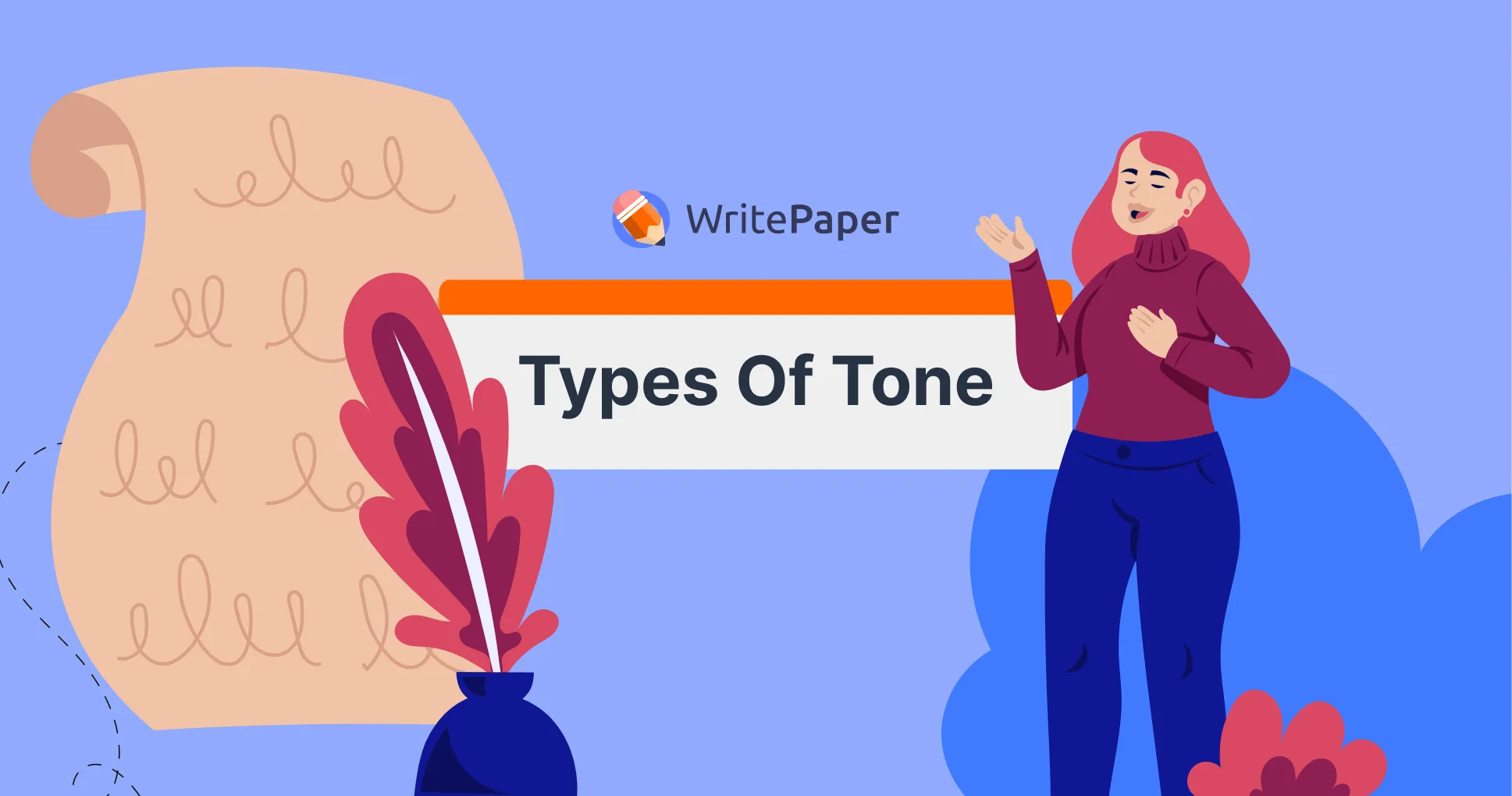An essay is a structured piece of writing that presents a coherent argument or narrative on a specific topic. Essays are a fundamental part of academic writing and are used to assess a student's understanding, analytical skills, and ability to convey ideas clearly and persuasively. They come in various forms, each serving a different purpose and requiring a unique approach. That being said, understanding the different types of essays is crucial for academic success and effective communication.
Whether you need help brainstorming ideas, properly structuring, or polishing your final draft, their team of experts is ready to help you succeed!
Argumentative Essays

In argumentative essays the author presents a position on a particular issue and provides evidence and reasoning to support that position. The goal is to persuade the reader to accept the writer's viewpoint or to consider it as a valid perspective.
Here, the writer must clearly state their thesis or main argument early in the essay, typically in the introduction. The body paragraphs then provide detailed support for the thesis, including facts, statistics, expert opinions, and logical reasoning. Each paragraph should focus on a single piece of evidence or a particular point that backs up the thesis. Additionally, addressing and refuting counterarguments is a crucial component of an argumentative essay, as it shows the writer's ability to consider and challenge opposing viewpoints.
Example Paragraph:
"One of the primary reasons why school uniforms should be mandatory in public schools is that they promote equality among students. When all students wear the same uniform, the social pressure to wear trendy or expensive clothes is significantly reduced. This helps to minimize the economic disparities that can often lead to bullying and social exclusion. Research conducted by the National Association of Secondary School Principals found that schools with mandatory uniform policies reported a 30% decrease in bullying incidents. By creating a more inclusive environment, school uniforms contribute to a safer and more focused educational setting for all students."
Expository Essays

Expository essays aim to explain, inform, or clarify a topic to the reader. These essays are characterized by a straightforward, fact-based approach without the inclusion of the writer's opinions or emotions. The primary objective is to present information in a clear, concise, and logical manner.
An expository essay typically begins with an introduction that includes a clear thesis statement outlining the main point or purpose of the essay. The body paragraphs are structured to provide a step-by-step explanation or detailed information about the topic, often organized in a logical sequence such as chronological order, cause and effect, or comparison and contrast. Each paragraph should begin with a topic sentence that introduces the main idea, followed by supporting details such as facts, examples, and explanations. The conclusion summarizes the information presented and reinforces the thesis without introducing new ideas.
Example Paragraph:
"Photosynthesis is a fundamental process used by plants to convert light energy into chemical energy. This process occurs in the chloroplasts of plant cells, where chlorophyll, the green pigment, captures light energy. During photosynthesis, carbon dioxide and water are converted into glucose and oxygen. The overall chemical reaction can be represented by the equation: 6CO2 + 6H2O + light energy → C6H12O6 + 6O2. This process not only provides energy for plants to grow and thrive but also produces the oxygen essential for the survival of most living organisms on Earth."
If you find yourself challenged while presenting key facts and arguments, consider using our thesis writing service!
Narrative Essays

Narrative essays tell a story or recount an event or series of events from the writer's perspective. These essays are often personal and use vivid details and storytelling techniques to engage the reader and convey a deeper meaning or insight.
In a narrative essay, the writer typically uses the first-person point of view to make the story more intimate and engaging. The structure of a narrative essay includes an introduction that sets the scene and introduces the main characters and plot, a body that unfolds the story in a logical sequence, and a conclusion that reflects on the significance of the story. Descriptive language, dialogue, and sensory details are crucial components that help bring the story to life.
Example Paragraph:
"As I stepped off the bus, the crisp autumn air filled my lungs, and the golden leaves crunched under my feet. It was my first day at a new school, and the sprawling campus seemed both exciting and intimidating. I clutched my backpack tightly, feeling a mix of anticipation and nervousness. As I walked towards the entrance, I couldn't help but wonder what adventures and challenges awaited me in this unfamiliar place."
If you intend to use first-person narration for your college essay, check out our detailed guide on how to write a college admission essay.
Descriptive Essays

Descriptive essays aim to provide a detailed and vivid portrayal of a person, place, object, or event. The primary goal is to create a strong impression on the reader by appealing to their senses and emotions.
A descriptive essay focuses on painting a picture with words, using sensory details to evoke sights, sounds, smells, tastes, and textures. The essay often starts with a general introduction to the subject, followed by paragraphs that delve into specific details and aspects of the topic. The use of figurative language, such as metaphors and similes, can enhance the imagery and make the description more engaging.
Example Paragraph:
"The old house stood at the end of the lane, shrouded in a veil of ivy and mystery. Its weathered wooden boards creaked under the weight of years, and the once-bright red paint had faded to a muted rust. The air was thick with the scent of damp Earth and wildflowers, and the distant sound of a babbling brook added a serene yet eerie ambiance. Inside, the grand chandelier hung precariously, casting ghostly shadows on the walls adorned with dusty portraits."
Definition Essays

Definition essays explore the meaning of a specific term, concept, or idea. These essays go beyond the dictionary definition to provide an in-depth explanation and analysis, often including personal interpretations and examples.
A definition essay begins with a standard definition from a dictionary, followed by a thesis that presents the writer's perspective or interpretation of the term. The body paragraphs then expand on this interpretation, exploring various facets of the term, including its origins, context, and usage. Examples, anecdotes, and explanations are used to clarify and illustrate the definition. The conclusion reinforces the thesis and summarizes the key points discussed in the essay.
Example Paragraph:
"Courage is often defined as the ability to do something that frightens one, but its true essence goes far beyond mere bravery. Courage encompasses the strength to face adversity, the resolve to stand up for one's beliefs, and the resilience to overcome obstacles. It can be seen in the everyday acts of individuals who confront their fears, whether it be a child taking their first steps, a student speaking out against injustice, or a firefighter running into a burning building. True courage is not the absence of fear, but the determination to persevere despite it."
Ready to Craft a One-of-a-Kind Essay?
Order now for a tailored essay - Our expert wordsmiths are armed with creativity, precision, and a sprinkle of genius!

Process Essays

Process essays, also known as "how-to" essays, provide step-by-step instructions on how to accomplish a specific task or process. The purpose is to guide the reader through the steps needed to complete an activity or understand how something works.
A process essay typically includes an introduction that explains the process's purpose and importance, a list of required materials or prerequisites, and a series of steps presented in chronological order. Each step should be clearly described, with transitions to guide the reader smoothly from one step to the next. The conclusion often summarizes the process and highlights any final considerations or tips.
Example Paragraph:
"To bake a perfect chocolate cake, start by preheating your oven to 350°F (175°C) and gathering all the necessary ingredients: flour, sugar, cocoa powder, baking powder, eggs, milk, and butter. First, mix the dry ingredients in a large bowl. In a separate bowl, beat the eggs and add the milk and melted butter. Gradually combine the wet and dry ingredients, stirring until the batter is smooth. Pour the batter into a greased baking pan and bake for 30-35 minutes, or until a toothpick inserted into the center comes out clean. Allow the cake to cool before frosting."
Compare and Contrast Essays

Compare and contrast essays examine the similarities and differences between two or more subjects. The goal is to highlight the distinct and common features to provide a deeper understanding of the subjects being compared.
These essays can be structured in two ways: point-by-point or block method. In the point-by-point method, each paragraph compares or contrasts a specific aspect of both subjects. In the block method, the essay discusses all the aspects of one subject before moving on to the other. The introduction presents the subjects and the thesis statement, the body paragraphs elaborate on the comparisons and contrasts, and the conclusion summarizes the key points and restates the thesis.
Example Paragraph:
"While both cats and dogs make popular pets, they have distinct differences in their behavior and care requirements. Cats are generally more independent and require less attention than dogs, who thrive on companionship and regular interaction. Additionally, dogs need daily exercise and outdoor activities, whereas cats can be content living indoors with minimal physical activity. These differences make each pet suitable for different types of owners, depending on their lifestyle and preferences."
Persuasive Essays

Persuasive essays aim to convince the reader to accept a particular viewpoint or take a specific action. The writer uses logical arguments, emotional appeals, and evidence to persuade the reader.
As our skilled persuasive essay writing service suggests, you should start with a clear thesis statement that defines your position. Then, follow up with body paragraphs that present arguments supporting the thesis, backed by facts, statistics, examples, and expert opinions. Addressing and refuting counterarguments is also crucial to strengthen your case. Lastly, reinforce the thesis in the conclusion and urge the reader to adopt your perspective or take action.
Example Paragraph:
"Implementing renewable energy sources, such as solar and wind power, is essential for combating climate change. Fossil fuels contribute significantly to greenhouse gas emissions, leading to global warming and environmental degradation. By investing in renewable energy, we can reduce our carbon footprint and create a sustainable future. Studies have shown that countries with high renewable energy usage have significantly lower pollution levels. It is imperative that governments and individuals take proactive steps to transition to renewable energy sources."
Cause and Effect Essays

Cause and effect essays explore the reasons behind a particular event or situation (cause) and the resulting consequences or outcomes (effect). The purpose is to analyze the connections and relationships between events.
A cause-and-effect essay typically starts with an introduction that outlines the event or situation and presents the thesis. The body paragraphs are divided into sections discussing the causes, effects, or both. Each paragraph should focus on a single cause or effect, providing evidence and examples. The conclusion summarizes the main points and reinforces the thesis.
Example Paragraph:
"The rise of social media has significantly impacted interpersonal communication. One major cause is the increased accessibility of digital platforms, allowing people to connect instantly regardless of geographical distance. As a result, face-to-face interactions have decreased, leading to a decline in the development of social skills. Studies indicate that individuals who spend excessive time on social media may experience higher levels of loneliness and anxiety, highlighting the profound effects of digital communication on mental health."
Critical Essays

Critical essays analyze, interpret, and evaluate a text, piece of art, or other media. The goal is to provide a detailed critique, examining the work's strengths, weaknesses, and overall impact. If you're unsure how to write an article review, you will likely be asked to employ critical essay writing techniques.
A critical essay begins with an introduction that presents the work being analyzed and the writer's thesis or main argument. The body paragraphs provide a detailed examination of specific aspects of the work, such as themes, characters, structure, and style. Each paragraph should include evidence from the work to support the analysis. The conclusion summarizes the critique and reinforces the writer's overall evaluation.
Example Paragraph:
"In George Orwell's '1984,' the use of language as a tool of oppression is a central theme. The novel's concept of 'Newspeak' demonstrates how language can be manipulated to control thought and suppress dissent. By reducing the complexity of language, the Party limits the range of ideas that individuals can express, ultimately shaping their perceptions of reality. This manipulation of language is a powerful commentary on the relationship between language and power, making '1984' a timeless and relevant critique of authoritarianism."
For a detailed how-to guide on a synthesis essay, check out our dedicated article!
Essay Writing Takes Too Much Time?
Keep calm and use our descriptive essay writing service for top-notch results.

To Sum Up
As we conclude this article, you now have a solid understanding of the main types of essays. No longer will you feel overwhelmed by these assignments due to a lack of confidence.
FAQs about Types of Essays
What are the Different Types of Essays?
There are several types of essays, each serving a unique purpose and requiring different writing techniques. The main types include:
- Narrative Essays: Tell a story or recount an event
- Descriptive Essays: Focus on detailing a specific person, place, thing, or event.
- Expository Essays: Provide information, explain a topic, or clarify an idea.
- Persuasive Essays: Aim to convince the reader of a specific viewpoint.
- Comparative Essays: Analyze the similarities and differences between subjects.
What are the Five Main Types of Essays?
The five main types of essays commonly recognized in academic settings are:
- Argumentative Essays: Persuade with evidence and reasoning.
- Cause and Effect Essays: Analyze reasons and outcomes.
- Expository Essays: Explain and inform objectively.
- Critical Essays: Evaluate and interpret works or ideas.
- Analytical Essays: Break down and examine components.
What Type Of Essay is the Most Common at University?
Argumentative Essays are the most common type of essay at the university level. These essays require students to take a position on a specific issue and defend it with evidence and logical reasoning. Professors often assign argumentative essays to help students develop critical thinking skills, learn to construct cohesive arguments, and practice persuasive writing.
How Do I Know What Type of Essay to Write?
To determine what type of essay to write, consider the following:
- Assignment Guidelines: Review the instructions provided by your instructor.
- Purpose: Identify the purpose of your writing. Are you telling a story (narrative), describing something (descriptive), or explaining a concept (expository)?
- Audience: Consider your audience and what they expect from your writing.
- Subject Matter: Think about the nature of your topic and which type of essay would best convey your message.
- added more essay types;
- add examples;
- added FAQs.
Guide to Different Kinds of Essays - Resources for Writing Different Types of Essays. (n.d.). Gallaudet University. https://gallaudet.edu/student-success/tutorial-center/english-center/writing/resources-for-writing-different-types-of-essays/guide-to-different-kinds-of-essays/
THE COLLEGE STUDENT’S GUIDE TO WRITING FIVE TYPES OF ESSAYS Narrative Essay. (n.d.). https://intranet.missouriwestern.edu/cas/wp-content/uploads/sites/17/2019/01/Five-Types-of-Essays.pdf

.png)



.webp)